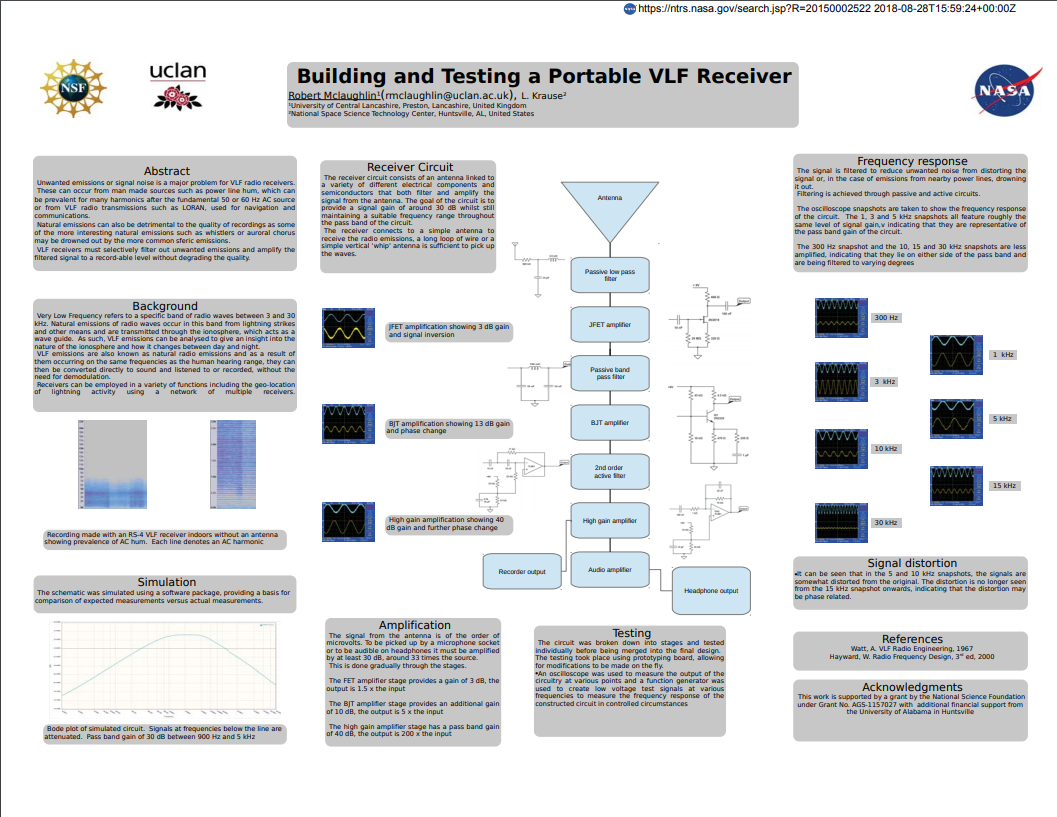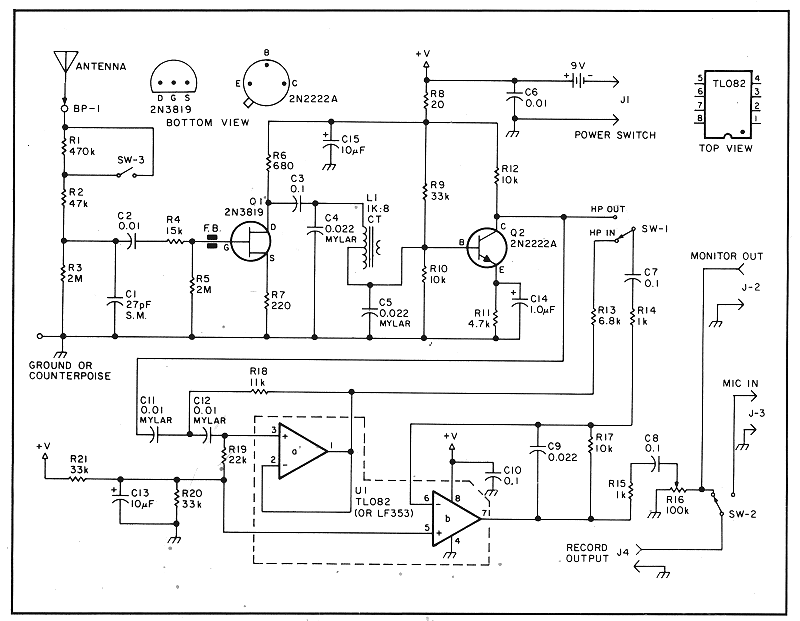
Inductor 元 was constructed by winding a 26-gauge wire 30 turns on a 0.25-in diameter ferrite core that was retrieved from an old AM-radio, loopstick antenna coil. This means 3.5 MHz = 0 Hz 3.6 MHz = 100 kHz and 4.0 MHz = 500 kHz. When the receiver is regulated above 3.5 MHz and moving towards the 4 MHz mark, the dial value, beginning from 3.5 MHz can be utilized to scan the converted frequency.
#Nasa vlf receiver free
The receiver must generate a loud tone through its BFO (beat free oscillator), which is heterodyning with the 3.5 MHz signal from the converter’s crystal-oscillator. After that, you should connect a fairly long wire-antenna to the converter and tune the receiver’s mode switch to the CW position. It is advised to connect a strong ground to the converter and receiver. Because the circuit draws a small amount of current (a few milliamps), we recommend the application of a battery.īefore assembling the VLF converter, ensure the connection of the converter’s RF output to the shortwave receiver’s antenna is via a shielded or coaxial cable. This converter will function most efficient when the unit is enclosed in a metal case.

You can apply a socket for XTAL1 if you need to convert to another frequency. It is crucial to ensure the crystal-oscillator circuit is isolated from the front-end circuitry. Whatever your circuit configuration is, you must place the components and interconnecting leads short. You may also use a circuit board to make the whole unit more compact. The components are easily mountable on a 2 x 3 inch perfboard.

Incorporate a standard switching circuit to the swapping methods that were shown if you want a dual-band converter.Īlthough the circuit’s frequency range is on the low end, you must be careful while building it. Alternatively, if you want to construct only a short-term change, just bridge the connections across L2. You can remove C2 and C3, and substitute C3 with a 150 pf, 100-WVDC ceramic disc capacitor.Īlso, you need to discard L2 and attach L1 to Q1’s gate. You need to exchange a few input-filter components if there is a need for the circuit to operate from 200 kHz to 500 kHz. Using the components shown in the circuit diagram above, you can build a circuit which will cover all very low frequencies or the VLF from less than 10 kHz to above 260 kHz. Most of the regulated transmitters have occupied the airways for a few hundred miles to be detected by other VLF’ers. On frequencies more than 15 kHz, one would expect to detect several of the following signals Loran, Military, several foreign broadcasts, diverse CW signals and in certain places a number of beacon and CW signals between 160 kHz and 190 kHz delivered by testers using 1 W transmitters. Heavy signals like electrical storms and powerful lightning can be received in those frequencies as crunching, whistling crackling noises way before the thunderstorm strikes. It is just strong to be detected on a fairly short antenna. Such a signal is the dit-dah wave that is a slow and comes in two tone.

There are a number of rare signals that is audible on frequencies below 15 kHz. Wireless and electrical frequencies in the atmosphere that are transmitted in the lower frequency range between 3 kHz and 30 kHz are known as VLF or very low frequency.

This is where the proposed VLF converter circuit comes to aid. This typical tuning arrangement neglects a majority of the interesting and uncommon signals found below the standard broadcast band. A huge number of general-coverage shortwave receivers start with the AM-broadcast band and rise in frequency to around 10 meters, or 30 MHz.


 0 kommentar(er)
0 kommentar(er)
